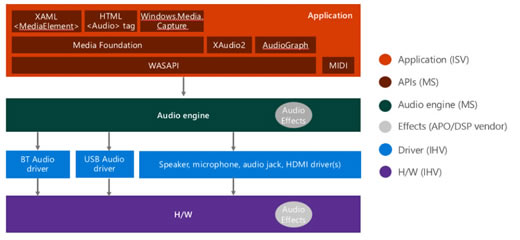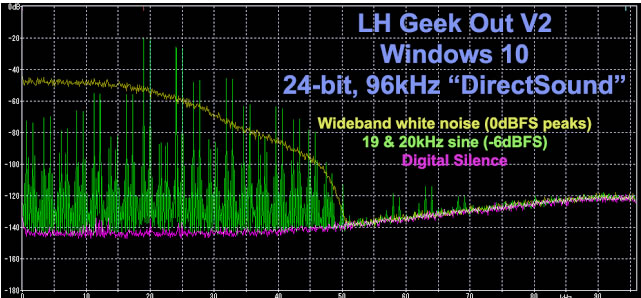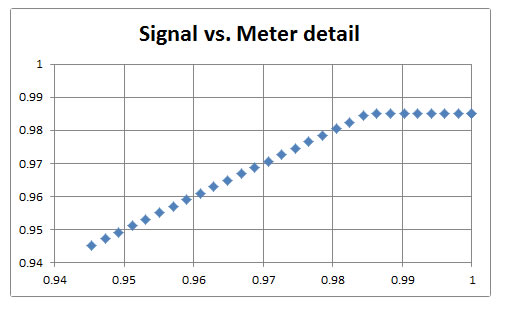Windows 10
Win10 support FLAC, ALAC and MKV.
A welcome addition.
According to PCAudioLabs latency has improved.
In Windows 7, the lowest latency numbers achieved were at a buffer size of 220 samples for a latency of 5ms.
In Windows 8, the lowest latency numbers achieved were at a buffer size of 179 samples for a latency of 4ms.
In Windows 10, the lowest latency numbers were at a buffer of 132 samples for a latency of 3ms.
Source: PCAudioLabs
According to SonciState:
Audio Core Optimisation - it will now be possible to define and isolate all the core audio processing to a single core, meaning no other processes will be able to interrupt the stream.
Source: SonicState
Windows 10 Creators Update (April 2017) added a native USB Audio Class 2 Driver.
Archimago measured its performance and didn’t find any anomalies.
The UAC2 standard was finalized in 2009.
A pity it took MS 8 years to implement it.
It is playback only. The recording part of UAC2 is not implemented.
Windows 10 Audio Stack Diagram

Note that WASAPI is the only protocol shown in this diagram.
Indeed one is supposed to use it for audio in either exclusive or shared mode.
These older APIs are deprecated:
- DirectShow
- DirectSound
- PlaySound
- Windows.Media.MediaControl
Direct Sound
It will do sample rate conversion requiring few resources but it measures poorly.

MEASUREMENTS: Windows 10 "Audio Stack" / DirectSound Upsampling - Archimago's Musings
The culprit is not the re-sampler but the limiter (CAudioLimiter).

Linearity of Windows volume APIs – IAudioMeterInformation and full-scale signals
The trick is to lower the output of the media player with 0.2 dB to avoid the limiter to kick in.
More on Direct Sound and how to improve on it can be found here.
- Windows support for USB Audio 2.0? - Windows Insider Program
- Windows 10 for Pro Audio - PCAudioLabs
- Why Microsoft's Windows 10 Audio And MIDI APIs Are A big Deal - SonciState
- Windows 10 is rolling out - gearslutz
- MEASUREMENTS: Windows 10 "Audio Stack" / DirectSound Upsampling - Archimago's Musings
- Windows 10 Creators Update USB Audio Class 2 Driver. - Archimago's Musings
- Linearity of Windows volume APIs – IAudioMeterInformation and full-scale signals - Matthew van Eerde's web log
- Windows resampling not actually that bad? - Audio Science Review
- Windows Audio Architecture - Microsoft 2017

